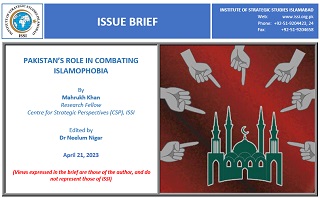Islamophobia is a complex phenomenon that involves hatred, fear, and prejudice towards Islam and Muslims, including their places of worship, religious texts, and cultural practices. The term ‘Islamophobia’ stands for the fear of and aggression toward Muslims and Islam which arises from racism and culminates in violent, discriminatory, and exclusionary behaviour towards Muslims and those perceived as Muslim.[1] It also encompasses stigmatization, racism, and discrimination in various aspects of life, including the media, workplace, and political sphere. These attitudes can be expressed through violent actions such as burning mosques and vandalizing properties, as well as abusive behaviour towards Muslim women who wear headscarves. Islamophobia is identifiable through a range of perspectives, statements, behaviours, and gestures, and can be seen not only in isolated incidents but also in broader societal trends.[2]
Western discourse has a long history of Islamophobia, dating back to the Middle Ages when negative stereotypes about Muslims were used to garner popular support for the Crusades. Such stereotypes also served to justify European colonial domination of the Muslim-majority world, portraying Muslims as ‘violent’ and ‘uncivilized.’ The fear has not been born in thin air; indeed, the actions of many key individuals, think tanks, media outlets, and political leaders are involved to promote false and inflammatory ideas about Islam and Muslims, contributing to the growth of the phenomenon.[3]















